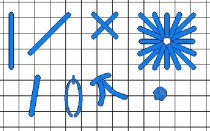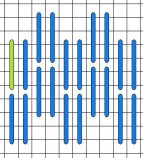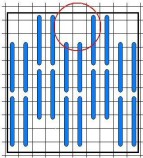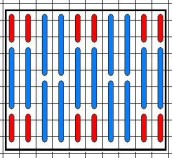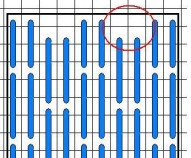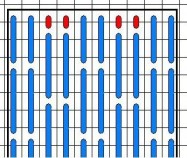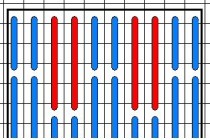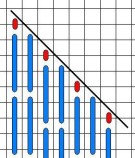How to Compensate Needlepoint Stitches
Compensation: What is it? The Encarta Dictionary defines it as, “something that makes up for something else.” For needlepointers, this means “something” that makes up an area for a desired stitch. That something is a partial stitch.
Before we get started, let’s talk about stitch groups. Stitches can be grouped in to seven distinct categories. These include straight stitches, such as Double Brick; diagonal stitches, such as Byzantine; oblique such as Fly; crossed and slashed such as Cross stitch and Fishbone; eyelets such as Eyelet Variation; piled like Turkey; looped stitches such as Lazy Daisy and knot stitches such as French Knot. Choosing from these different categories, you can create thousands of stitches and combinations. You may have a pattern with one or more groups of stitches. We will be talk about each of these in detail.
How to Compensate Straight Stitches
Take a look at Double Brick. You will see a series of straight stitches traveling up 4 canvas threads. (Green stitch in graph) Each stitch is paired up. Double Brick is achieved by sewing a pair of stitches over 4 canvas threads, travel down 2 canvas threads and sew over 4 threads, go back down 6 stitch over 4 threads. Repeat the process.
You may be tempted to create a stitch which travels over 5 canvas threads. Do not do this! Yes, the canvas is covered but you have broken the pattern. Remember, we want to use partial stitches not create new ones.
Rule: Never create a longer stitch than what is required for the pattern. A longer stitch will break up the pattern and make the eye see an error.
What would happen if we created Double Brick on an angle? You will use different compensation stitches depending upon the need. Look at the graph. In this example, the compensations are traveling up 1 canvas thread.
Whether you stitch Double Brick, Old Florentine or Hungarian, the rules are the same. Just like upright stitches such as Double Brick, straight stitches that lay horizontal will also apply to these rules.
Rule: If you are stitching Encroached Gobelin start at the top with a compensated row. Continue to work downward until you have finished the row. If needed, compensate the last row.


